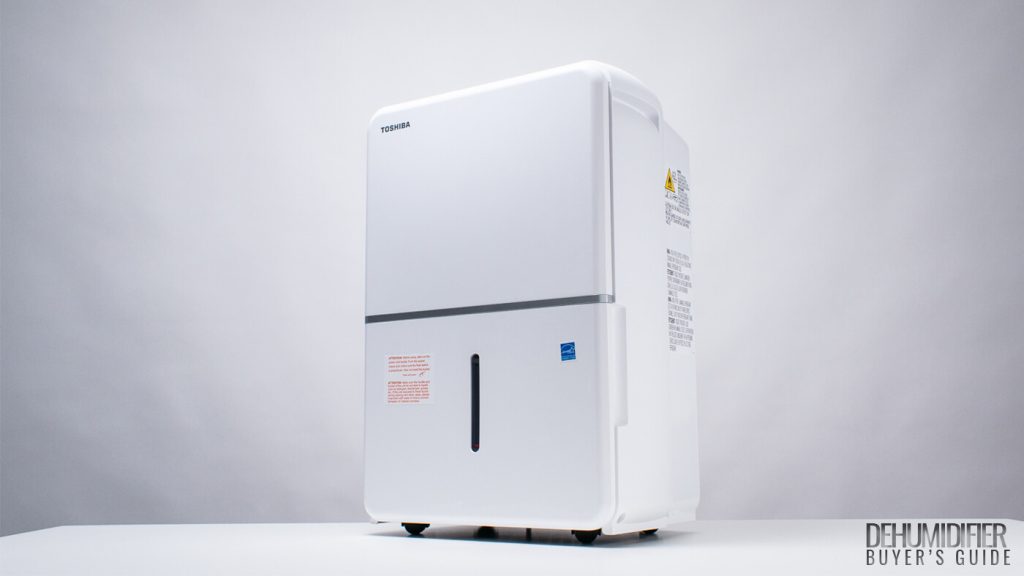
- The unit’s side exhaust allows you to direct most of the noise it produces away from you.
- Outside of our noise output tests, this unit didn’t perform particularly well in any of our other tests, but it also didn’t perform particularly poorly
- Consumer feedback indicates this unit doesn’t offer very good long term reliability
- This dehumidifier’s water tank is considerably smaller than that of top rated units we recommend
- Dehumidifier
- Instruction Manual
| Energy Efficiency | 4.0 |
| Noise Output | 5.0 |
| Moisture Removal | 4.0 |
| Hygrometer Accuracy | 4.0 |
| Durability | 3.0 |
| Adjustability | 4.0 |
| Versatility | 4.5 |
| Extra Features | 4.5 |
| Ease of Use | 3.5 |
| Portability | 4.0 |
| Warranty | 3.5 |
| Value | 3.5 |
| Editor's Score | 4.3 |
Performance Test Results
Energy Efficiency
The TDDP5014RES2 was measured to draw 532 watts of power in our tests. This is less power draw than that of most other 50 pint dehumidifiers we’ve tested.
Popular competitors like the GE APHL50LB and Hisense DH7021KP1G drew over 600 watts of power under the same conditions.
The Toshiba doesn’t remove moisture as quickly as these other units though, according to our testing.
Overall, this unit only has slightly above average energy efficiency. An example of a unit that has excellent energy efficiency is the Midea Cube. It drew only 512 watts of power in our tests AND it removed moisture very quickly in our moisture removal tests.
Noise Output
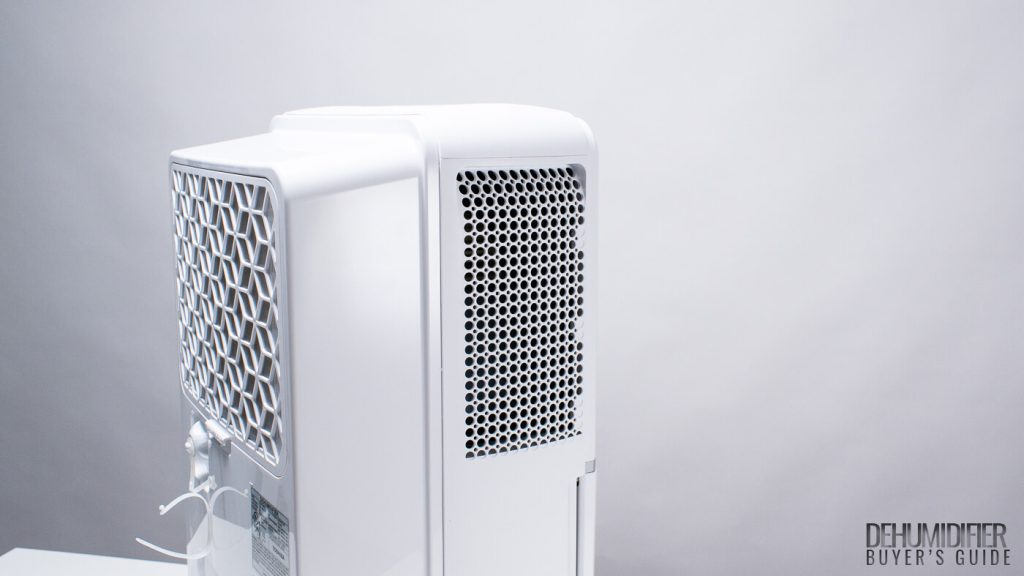
The Toshiba performed well in our noise output tests mostly because it exhausts through its side. We place the sound meter above the dehumidifier’s control panel to measure noise output. And because the Toshiba exhausts through the side, most noise is directed away from the meter.
The TDDP5014RES2 was measured at 60.1 dB of noise output right above its control panel on high fan speed. For comparison, the top rated FFAD5033W1 – a unit that exhausts through the top of the dehumidifier – was measured at 70.2 dB in the same test under the same conditions (high fan speed).
Moisture Removal
In a 50 sq. ft. room the TDDP5014RES2 lowered room humidity from 90% RH down to 40% RH in 9 minutes, 58 seconds (this is the average time it took over three different trials). The GE APHL50LB and Hisense DH7021KP1G did so in 8 minutes, 56 seconds and 8 minutes, 51 seconds, respectively. The top rated Midea Cube did so in 7 minutes, 39 seconds.
These are all better results than that of the Toshiba, but the Toshiba’s result is still better than average.
Hygrometer Accuracy
The TDDP5014RES2’s built-in hygrometer read room humidity anywhere from 1% over to 2% under the actual room humidity. The best performing units are able to read the actual room humidity on the dot.
Included Features, Functionality, Build Quality, Warranties, and Value
Durability (Build Quality)
General Impressions
This unit is the definition of average build quality. Its plastic shell is average quality. Its control panel is average quality. Its filter is average quality, and so on and so forth. Top rated units we recommend are made of noticeably higher quality materials.
Consumer Feedback
Compared to most other 50 pint dehumidifiers we’ve researched, the TDDP5014RES2 does have higher percentage of customer complaints about the unit’s durability.
Overall Category Score
Overall, we give the TDDP5014RES2 an average 3.5/5 for durability.
Adjustability
This unit features two fan speeds, a continuous operation mode, and an automatic mode.
Its timer can be set in half hour increments up to 10 hours and one hour increments from 10 hours to 24 hours.
Overall Category Score
We give this unit a 4/5 for adjustability.
Versatility
Set Humidity Range
The TDDP5014RES2 can be set from 35% to 85% RH in 5% increments. When it reaches target humidity its compressor automatically cycles off while its fan continues to run for several minutes.
Operating Temperature Range
This unit cannot be operated at temperatures below 41° F. This is a fairly standard limit for compressor based dehumidifiers.
Gravity Drainage
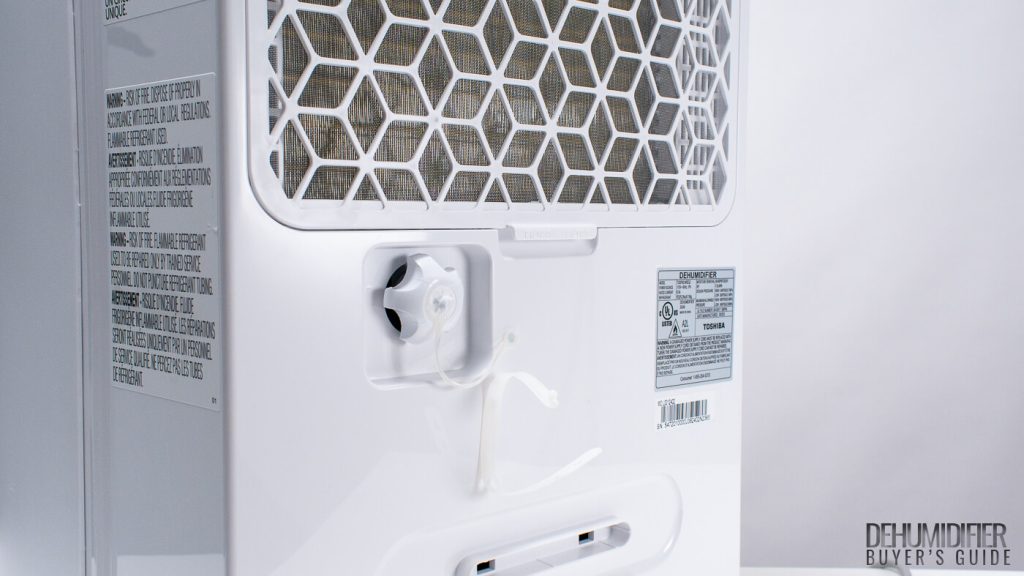
The gravity drain plug for this unit is positioned on the back of the dehumidifier. You can connect a garden hose to this plug to drain it using gravity.
Built-in Pump
This model does not feature a built-in pump.
Overall Category Score
We give the TDDP5014RES2 a 4.5/5 for versatility.
Extra Features
Temperature Reading
This unit does not display ambient room temperature.
Defrost
It does have defrost cycle and light that illuminates on the control panel to let you know when this mode is activated.
Check Filter
This unit also has a check filter light to let you know when it’s time to clean and replace its air filter.
Overall Category Score
The TDDP5014RES2 earns a 4.5/5 in the category.
Ease of Use
LCD Display Clarity
This unit’s LCD display is obscured a bit by the material that covers it.
Setup Difficulty
This unit is very easy to set up and use. Buttons and warning lights are clearly labeled and well laid out.
Filter Removal Difficulty
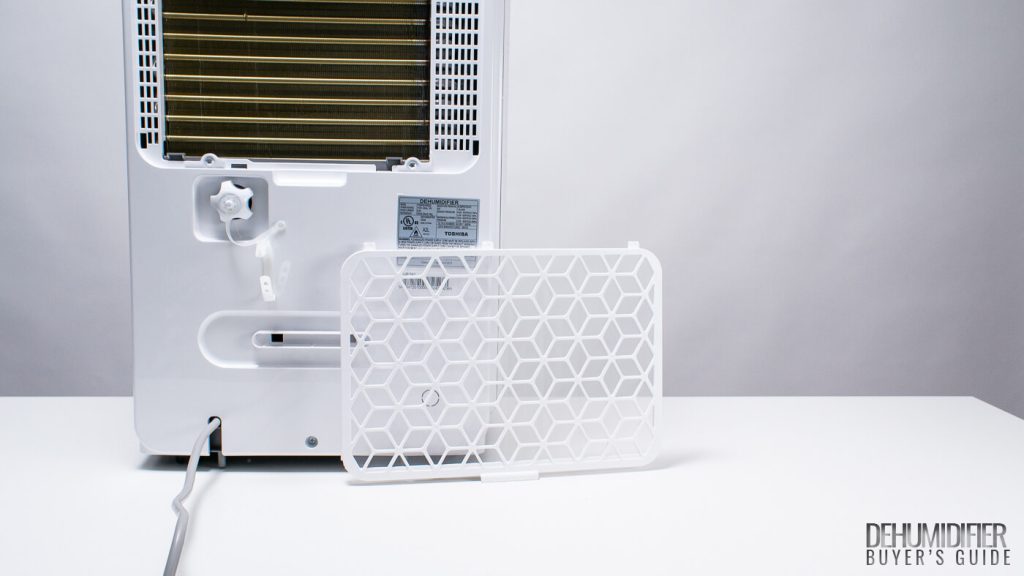
We didn’t have any trouble removing or replacing this dehumidifier’s air filter.
Manual Clarity
The TDDP5014RES2’s manual is easy to read and understand.
Water Tank Size
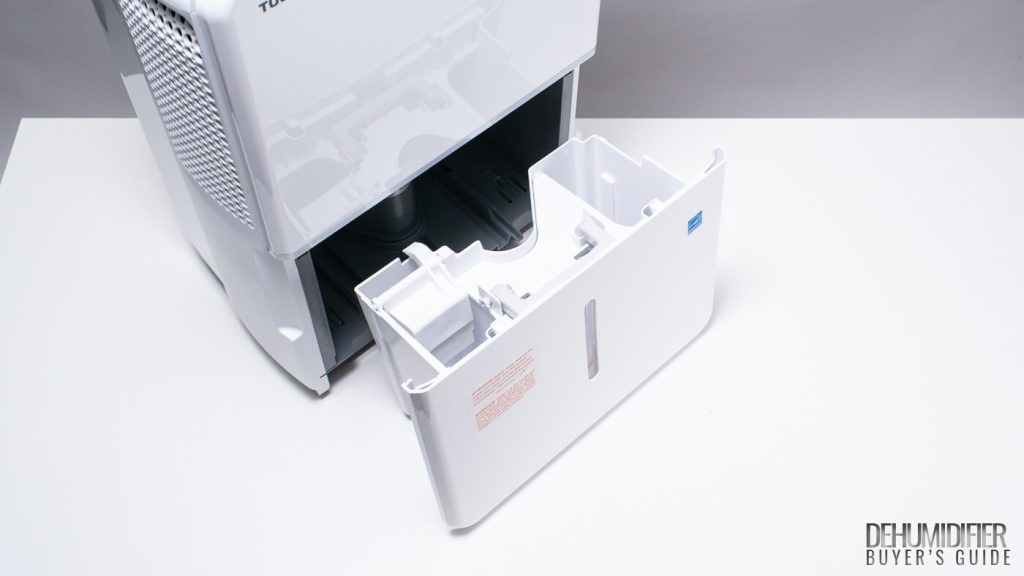
This unit’s water tank has a capacity of 13.6 pints. This is above average for its size class. Top rated competitors do have considerably larger tanks, though. The FFAD5033W1 tank has a capacity of 16.9 pints. The Midea Cube tank is massive with a total capacity of 34 pints.
Overall Category Score
Overall, the TDDP5014RES2 gets an average score for the category – 3.5/5.
Portability
At 43.87 lb. this unit is right around an average weight for its size class. It does have casters so you can easily push it around and it has side pocket handles if you have to pick it up off the ground.
You have two options to store its power cord – there’s a strap on the back or you can install a “buckle”. You can wrap the power cord around this plastic buckle.
Overall Category Score
The TDDP5014RES2 earns a 4/5 for portability.
Warranty (Manufacturer’s)
This unit comes with only a 1 year warranty. So do most other compressor based dehumidifiers on the market.
Value
The TDDP5014RES2 usually retails for around $250. This is neither a good nor a bad value. We think this unit is priced right around where it should be.
Have a question or comment? Let us know below.